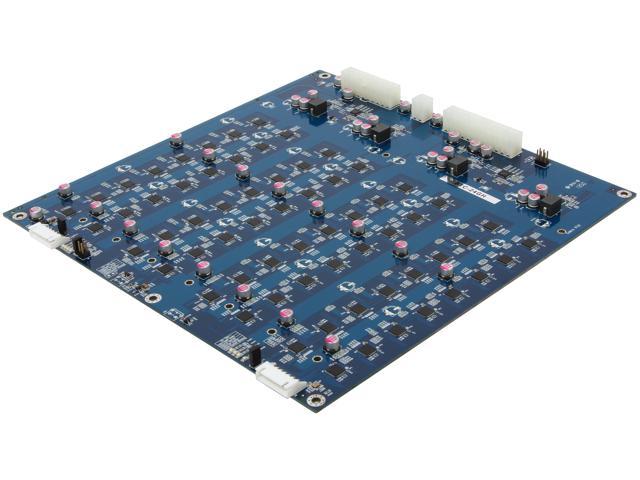Asic Bitcoin BTC Miners For Sale
Find great deals on eBay for bitcoin miner and asic miner. Bitmain Antminer S7 Bitcoin Btc cash ASIC Miner 4.73TH/s + 110v PSU Included. ASIC Bitcoin Miners.
Description Product Description Description The AvalonMiner 721 is the ROQ Solid Miner. The AvalonMiner 721 is made with Reliable Open Quality. Containing 72 x A3212 16 nm chips, AvalonMiner 721 is the latest Canaan AvalonMiner.
Its maximum hash rate is 6 TH/s. By connecting our AvalonMiner Controller (sold separately) to a single AUC3 (AvalonMiner USB Convertor 3), you may connect five AvalonMiners. For maximum usage, you may connect the AvalonMiner Controller to 4 AUC3 devices which may each connect to 5 AvalonMiners for a total simultaneous management of twenty AvalonMiner 721 to reach 120 TH/s. If you manage a large installation of AvalonMiners, we can help you deploy our openly developed AvalonMiner Management System which enables you to efficiently manage thousands of AvalonMiner machines. This product contains: 1 X AvalonMiner 721, 1 X AvalonMiner USB Converter 3 (AUC3), 1 X AUC3 I2C 5PIN Cable. Specifications Hashrate: 6 TH/s Power Consumption: ≈ 850-1000 Watts (with assumption of 90% power conversion ratio). PSU output pins: 8 x 6PIN PCIe power connectors.
Controller: AvalonMiner Controller AUC3: Each AUC may connect up to 5 devices. Dimensions: 340 mm x 136 mm x 150 mm Gross Dimensions: 400 mm x 210 mm x 220 mm Operating Temperature: -5 °C to 40°C Net weight: 4.3 kg Gross weight: 4.7 kg Attention AvalonMiner 721 includes a 90-day warranty, starting from the date goods are received. AsicMinerMarket guarantees a 90 days warranty from the first date you receive the goods. We promise to replace defective or faulty parts with new parts, but mining earnings will not be compensated.
Buyers pay inbound shipping and we will pay the return shipping. Please note that we are not responsible for any loss caused by customs delays, losses or charges.
Bitcoin mining is the process by which transactions are verified and added to the public ledger, known as the block chain, and also the means through which new bitcoin are released. Anyone with access to the internet and suitable hardware can participate in mining. The mining process involves compiling recent transactions into blocks and trying to solve a computationally difficult puzzle.
The participant who first solves the puzzle gets to place the next block on the block chain and claim the rewards. The rewards, which incentivize mining, are both the transaction fees associated with the transactions compiled in the block as well as newly released bitcoin. Bitcoin mining is a lot like a giant lottery where you compete with your mining hardware with everyone on the network to earn bitcoins. Faster Bitcoin mining hardware is able to attempt more tries per second to win this lottery while the Bitcoin network itself adjusts roughly every two weeks to keep the rate of finding a winning block hash to every ten minutes. In the big picture, Bitcoin mining secures transactions that are recorded in Bitcon’s public ledger, the block chain. By conducting a random lottery where electricity and specialized equipment are the price of admission, the cost to disrupt the Bitcoin network scales with the amount of hashing power that is being spent by all mining participants.
There are two basic ways to mine: On your own or as part of a Bitcoin mining pool or with and be sure to. Almost all miners choose to mine in a pool because it smooths out the luck inherent in the Bitcoin mining process. Before you join a pool, make sure you have a so you have a place to store your bitcoins. Next you will need to join a mining pool and set your miner(s) to connect to that pool.
With pool mining, the profit from each block any pool member generates is divided up among the members of the pool according to the amount of hashes they contributed. How much bandwidth does Bitcoin mining take?
If you are using a for mining with a pool then the amount should be negligible with about 10MB/day. However, what you do need is exceptional connectivity so that you get any updates on the work as fast as possible.
This gives the pool members a more frequent, steady payout (this is called reducing your variance), but your payout(s) can be decreased by whatever fee the pool might charge. Solo mining will give you large, infrequent payouts and pooled mining will give you small, frequent payouts, but both add up to the same amount if you’re using a zero fee pool in the long-term. The Bitcoin Network Difficulty Metric The is the measure of how difficult it is to find a new block compared to the easiest it can ever be. It is recalculated every 2016 blocks to a value such that the previous 2016 blocks would have been generated in exactly two weeks had everyone been mining at this difficulty. This will yield, on average, one block every ten minutes. As more miners join, the rate of block creation will go up.

As the rate of block generation goes up, the difficulty rises to compensate which will push the rate of block creation back down. Dash DASH Mining Protocol here. Any blocks released by malicious miners that do not meet the required difficulty target will simply be rejected by everyone on the network and thus will be worthless. The Block Reward When a block is discovered, the discoverer may award themselves a certain number of bitcoins, which is agreed-upon by everyone in the network. Currently this bounty is 25 bitcoins; this value will halve every 210,000 blocks. See Controlled Currency Supply or use a.